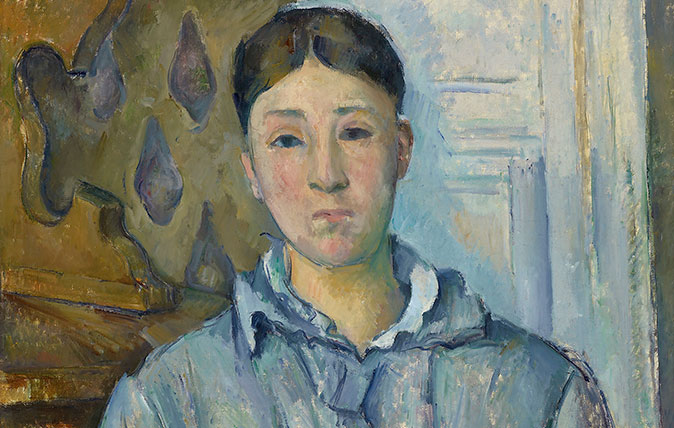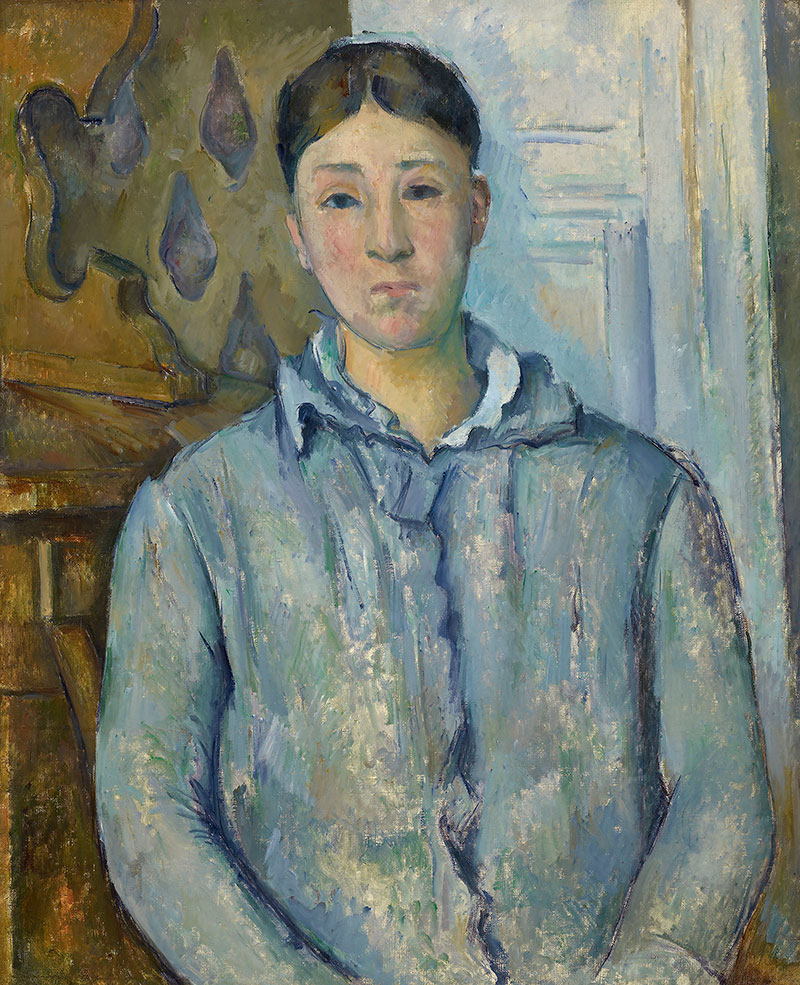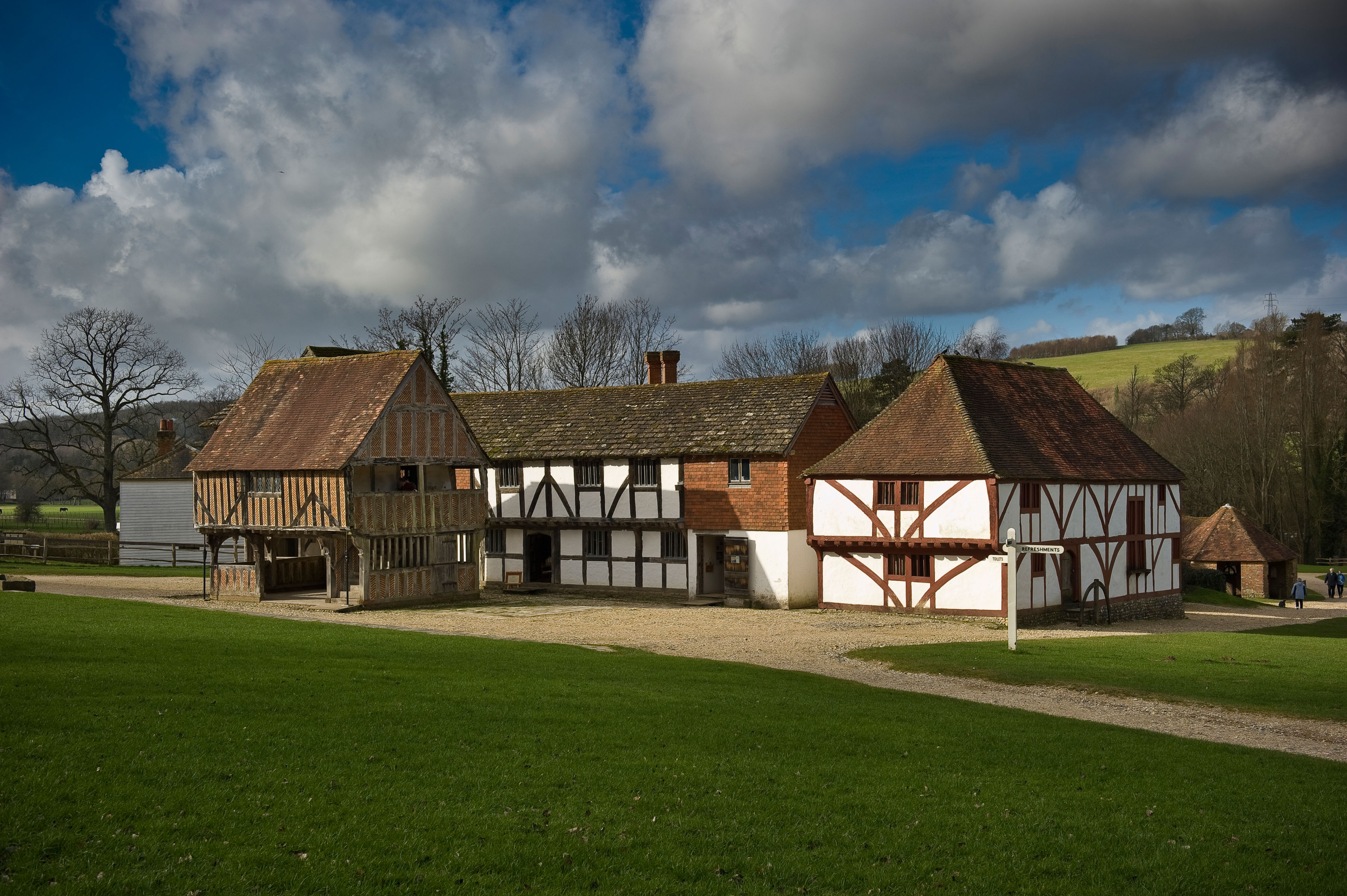In Focus: Cézanne's brutally honest portrait of his wife, 'weary and dissatisfied', as their relationship was on the rocks
The National Portrait Gallery's exhibition of portraits by Paul Cézanne comes to an end this weekend. Lilias Wigan takes an in-depth look at one of it's most intriguing paintings: Madame Cézanne in Blue in which the painter took a searingly honest look at his wife during a period of marital instability.


Cézanne and Hortense Fiquet were together for some fifteen years until they finally married in Aix en Provence, in 1886. Unlike most of his peers, Cézanne never received a portrait commission. Instead, he painted his closest friends and family, among them his father, his son, the art dealer Ambroise Vollard and his most devout sitter: his model, mistress and eventual wife, Hortense. This exhibition at the National Portrait Gallery allows us a rare window into that intimate circle.
In her portrait, Madame Cézanne in Blue (1886-7), on loan from the Museum of Fine Arts in Houston, Hortense turns to confront the painter face on. She seems weary and dissatisfied. Her weariness is unsurprising: this is one of over forty painted portraits that she sat for throughout her husband’s career. For the most part, Cézanne lived separately from her and their son, and this was known to be a period of particular marital instability.
"The unease and sadness is manifest not solely in her expression but in the whole picture"
Cézanne is not pre-occupied with an accurate representation of likeness and Hortense is almost unrecognisable between the pictures in this exhibition. Instead, he defies the conventional aesthetic portrayal of the female form through seduction and de-feminizes his subject. Her plain, oval face is mask-like and appears shrunken compared to her broad neck and the sculptural solidarity of her frame. Her hair is severely scraped back, without so much as a glimpse of her bun. Her clothing is drab and unrefined.
As though he were painting a landscape, Cézanne concentrates on the background as well as Hortense, forming a dialogue between the two. For instance, her sullen melancholy is reflected in the tear-shaped wallpaper behind her and the perplexing, ear shaped furniture protrudes into her territory. The seam on her clothing echoes the tonal split in the walls behind her. We’d expect her to be supported by the chair, but her body seems to slip off the base of the canvas.
This is Cézanne’s real skill; through the discrete interplay of the subject and its environment, he achieves compositional harmony. The unease and sadness is manifest not solely in her expression but in the whole picture, treated as a landscape. We are left with a penetrating, intimate impression of their relationship, with its pervading sense of melancholy.
Cézanne Portraits is on at the National Picture Gallery in London until February 11

Things to do: Music in the gardens, the buildings of the Weald & Downland and a circus at the cathedral
Keep your diary up-to-date with our selection of unmissable events and things to do in the next few weeks.
Sign up for the Country Life Newsletter
Exquisite houses, the beauty of Nature, and how to get the most from your life, straight to your inbox.
-
 Two quick and easy seasonal asparagus recipes to try this Easter Weekend
Two quick and easy seasonal asparagus recipes to try this Easter WeekendAsparagus has royal roots — it was once a favourite of Madame de Pompadour.
By Melanie Johnson
-
 Sip tea and laugh at your neighbours in this seaside Norfolk home with a watchtower
Sip tea and laugh at your neighbours in this seaside Norfolk home with a watchtowerOn Cliff Hill in Gorleston, one home is taller than all the others. It could be yours.
By James Fisher